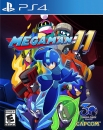kopstudent89 said:
I think in hindsight it did pay off but really it was about achieving the sweet spot which the Switch hit much closer. The Wii U tried to get 3rd parties back on board because the Wii declined in the later half when 1st party games weren't enough and the hardware began to look outdated. Wii U's hardware was a big hindrance though for 2 main reasons:
1. It made developing 1st party games tougher with longer development cycles as they got to grips with HD and modern games
2. It was still significantly weaker than other consoles so 3rd parties didn't bother with porting new gen games
The Switch had a much better sweet spot, however it also benefitted from Nintendo taking the decision to unify the handheld and home consoles development teams allowing them to have way more resources to develop strong 1st party titles that could drive those sales. 3rd parties seeing the success dived in - albeit not on PS or Xbox levels. Going back to the main point, Nintendo's stubbornness in holding onto their philosophy of focusing on 1st party games and IP development gave the Switch a big edge as they delivered AAA games back to back.
With the Switch 2, the challenge will be different. The Switch benefitted from the dying Wii U to focus early on the Switch which I think is the main reason of the Switch 2's delay, as they definitely feel they need to get a strong launch window to support sales early on and bring that momentum, especially with Zelda not being possible for release, which imo was the initial catalyst for the Switch's success. Still we are going to get a 3D Mario and new Mario Kart in the first year + I would assume Metroid Prime 4 as the more "mature" game all for launch which should set it up nicely.
What is clear though is that I think this will be the most 3rd party friendly console for Nintendo since possibly the SNES days. Apart from games like GTA6 we will probably see a lot more titles across all platforms with much closer visuals and performance than Nintendo has had for a while.
|
The Switch greatly benefited from games originally targeting the Wii U that were then canceled and released on the Switch instead. It also benefited from the already existing Wii U library and the fact that Nintendo teams already knew how to make the most of HD development. For many people, Nintendo was still perceived as being stuck at PS2-level graphical fidelity, so having games that finally looked good on a platform that was actually desirable became a huge selling point in itself
With current technology and a team experienced in HD development, Nintendo was able to release many games in a short time. By 2019, the Switch's destiny was all but sealed. However, the Switch 2 will face challenges. On one hand, the hardware will likely be a continuation of the Switch, which is a selling point in itself and is expected to be backward-compatible. These two factors alone could ensure the Switch 2 sells at least 50 to 60 million units, as people will want to continue playing their library in portable mode
What remains to be seen is whether Nintendo will provide good value with their new games. Will they finally embrace PS4-level graphics? Will their game worlds become more alive and expansive? Will performance improve? Developing better and more refined games will naturally take more time, potentially increasing the gap between releases. If they don’t secure strong third-party support to fill these gaps, this generation could resemble the N64 era for Nintendo: great games, yes, but with longer development times, players might feel there aren’t enough games to play
Another possibility is that Nintendo may create better hardware to attract third-party developers while continuing to focus their first-party efforts on smaller-scale projects, maintaining 2- to 3-year development cycles for their B-tier IPs. This could help mitigate their lack of third-party support
The real question is: in 2030, will people still be willing to pay $400 to upgrade and play games that, at their core, feel like they’re from the Wii U era? This is what makes me curious. I want to see how much the public is willing to pay premium prices for games that still seem rooted in the past


























































